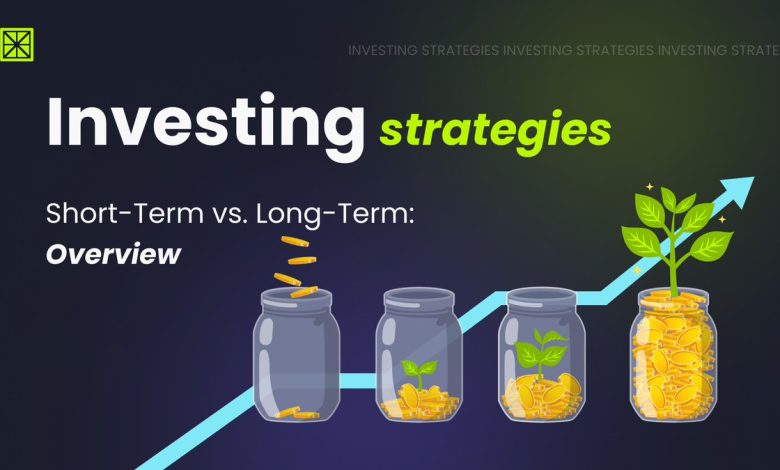Long-term vs. Short-term Cryptocurrency Investment Strategies

- Understanding the differences between long-term and short-term cryptocurrency investment strategies
- Pros and cons of long-term cryptocurrency investment
- The risks and rewards of short-term cryptocurrency trading
- How to determine which investment strategy is right for you
- Case studies of successful long-term and short-term cryptocurrency investors
- Tips for maximizing profits and minimizing losses with both investment strategies
Understanding the differences between long-term and short-term cryptocurrency investment strategies
When it comes to investing in cryptocurrency, it is essential to understand the differences between long-term and short-term investment strategies. Long-term investment involves holding onto assets for an extended period, typically years, with the expectation that their value will increase over time. On the other hand, short-term investment focuses on capitalizing on price fluctuations in the short term, often buying and selling assets within days or weeks.
Long-term investors tend to take a more passive approach, believing in the potential of the cryptocurrency market to grow over time. They are less concerned with short-term price movements and more focused on the overall trend of the market. In contrast, short-term investors are more active, constantly monitoring price changes and looking for opportunities to make quick profits.
Long-term investment strategies are often less risky compared to short-term strategies, as they are based on the belief that the market will eventually recover from any downturns. Short-term strategies, on the other hand, can be more volatile and unpredictable, as they rely on timing the market correctly to make a profit.
Both long-term and short-term investment strategies have their advantages and disadvantages. Long-term investing can provide more stability and potentially higher returns over time, while short-term investing offers the opportunity for quick profits but comes with higher risks. It is essential for investors to carefully consider their financial goals, risk tolerance, and investment timeline when deciding which strategy to pursue.
Pros and cons of long-term cryptocurrency investment
When it comes to long-term cryptocurrency investment, there are both advantages and disadvantages to consider. One of the main benefits of holding onto your digital assets for an extended period is the potential for significant growth over time. By staying invested in the market for the long haul, you may be able to ride out the volatility and see substantial returns on your initial investment.
On the other hand, long-term cryptocurrency investment also comes with its own set of risks. The market can be unpredictable, and there is always the possibility of losing money if the value of your chosen assets drops significantly. Additionally, holding onto your investments for an extended period means that your funds are tied up and may not be easily accessible when you need them.
Despite these risks, many investors believe that the potential rewards of long-term cryptocurrency investment outweigh the drawbacks. By carefully researching and selecting promising projects with strong fundamentals, you can increase your chances of success in the long run. It is essential to stay informed about market trends and developments to make informed decisions about when to buy or sell your assets.
The risks and rewards of short-term cryptocurrency trading
Short-term cryptocurrency trading can be a lucrative but risky endeavor. The potential rewards of short-term trading include the ability to capitalize on price fluctuations and generate quick profits. However, it is important to note that with high rewards come high risks. The cryptocurrency market is known for its volatility, which can lead to significant losses if not managed properly.
One of the main risks of short-term trading is the lack of long-term stability. Cryptocurrency prices can be highly unpredictable, making it difficult to accurately predict market trends in the short term. This unpredictability can result in sudden price drops or spikes, leading to losses for traders who are not prepared to react quickly.
On the other hand, short-term trading can also offer opportunities for traders to take advantage of market inefficiencies and profit from short-term price movements. By closely monitoring market trends and using technical analysis tools, traders can identify potential trading opportunities and make quick decisions to capitalize on them.
It is important for traders to carefully consider their risk tolerance and investment goals before engaging in short-term cryptocurrency trading. While the potential rewards can be enticing, it is crucial to have a solid understanding of the market and a well-thought-out trading strategy to minimize risks and maximize profits.
How to determine which investment strategy is right for you
Determining which investment strategy is suitable for you depends on various factors such as your financial goals, risk tolerance, and time horizon. Here are some key considerations to help you decide between a long-term or short-term cryptocurrency investment approach:
- **Financial Goals:** Consider what you aim to achieve with your investments. If you are looking for steady growth over time, a long-term strategy may be more appropriate. On the other hand, if you are seeking quick profits, a short-term approach could be more suitable.
- **Risk Tolerance:** Evaluate how comfortable you are with the potential ups and downs of the cryptocurrency market. Long-term investments tend to be less volatile, while short-term investments can be more unpredictable.
- **Time Horizon:** Determine how long you are willing to hold onto your investments. Long-term strategies typically involve holding assets for years, while short-term strategies involve buying and selling within a shorter timeframe.
Ultimately, the best investment strategy for you will depend on your individual circumstances and preferences. It may be beneficial to consult with a financial advisor or do thorough research before making a decision. Remember that both long-term and short-term cryptocurrency investment strategies have their own advantages and risks, so choose wisely based on your goals and risk tolerance.
Case studies of successful long-term and short-term cryptocurrency investors
Case studies of successful long-term and short-term cryptocurrency investors can provide valuable insights into the different strategies that can lead to profitable outcomes in the volatile world of digital assets. By examining the experiences of these investors, we can gain a better understanding of the risks and rewards associated with each approach.
One example of a successful long-term cryptocurrency investor is Sarah, who purchased Bitcoin in 2013 and held onto it through the ups and downs of the market. Despite experiencing significant price fluctuations, Sarah remained confident in the long-term potential of Bitcoin and was rewarded for her patience when the price surged in 2017. By taking a buy-and-hold approach, Sarah was able to capitalize on the overall growth of the cryptocurrency market.
In contrast, we have the case of Alex, a short-term cryptocurrency investor who actively trades various digital assets on a daily basis. Alex closely monitors market trends and uses technical analysis to make quick buying and selling decisions. While this approach can be more risky due to the high volatility of the market, Alex has been able to generate profits by capitalizing on short-term price movements.
Both long-term and short-term cryptocurrency investment strategies have their own advantages and disadvantages. Long-term investors like Sarah benefit from the overall growth of the market and have the potential to earn substantial returns over time. On the other hand, short-term investors like Alex have the opportunity to profit from rapid price fluctuations but must be prepared to handle increased risk.
Ultimately, the choice between long-term and short-term cryptocurrency investment strategies depends on individual goals, risk tolerance, and market conditions. By studying the experiences of successful investors like Sarah and Alex, we can learn valuable lessons that can help us navigate the complex world of cryptocurrency investing.
Tips for maximizing profits and minimizing losses with both investment strategies
When it comes to maximizing profits and minimizing losses with both long-term and short-term cryptocurrency investment strategies, there are a few key tips to keep in mind. By following these guidelines, investors can make informed decisions that align with their financial goals.
- Diversification: One of the most important strategies for both long-term and short-term cryptocurrency investments is diversification. By spreading investments across different cryptocurrencies, investors can reduce risk and increase the potential for profit.
- Research: Conducting thorough research is essential for success in both long-term and short-term cryptocurrency investments. Understanding the market trends, technology behind the cryptocurrencies, and potential risks can help investors make informed decisions.
- Set realistic goals: Whether investing for the long-term or short-term, it is crucial to set realistic goals. By defining clear objectives and timelines, investors can stay focused and avoid making impulsive decisions based on market fluctuations.
- Stay informed: Keeping up-to-date with the latest news and developments in the cryptocurrency market is key to maximizing profits and minimizing losses. By staying informed, investors can adapt their strategies to changing market conditions.
- Risk management: Implementing risk management strategies is essential for both long-term and short-term cryptocurrency investments. Setting stop-loss orders, diversifying investments, and avoiding emotional decision-making can help mitigate potential losses.
By following these tips, investors can navigate the volatile cryptocurrency market with confidence and increase their chances of success with both long-term and short-term investment strategies.



